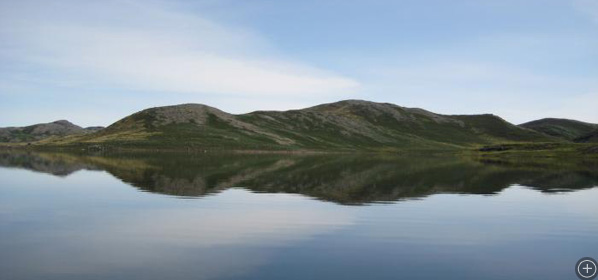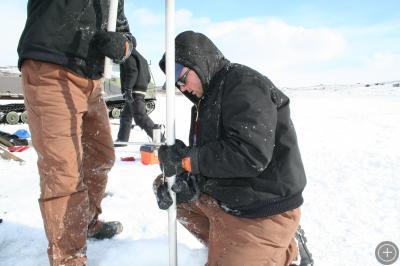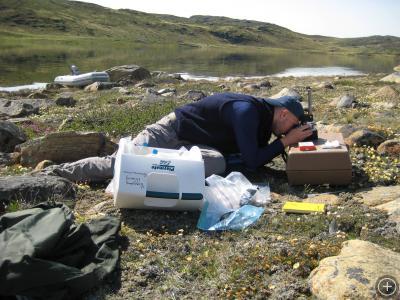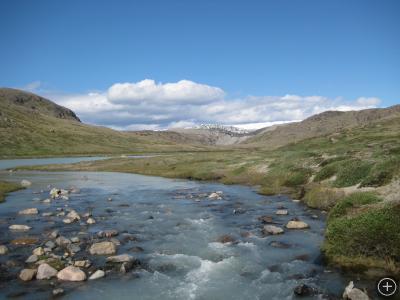
Mining lake sediments and using new molecular techniques to reconstruct Greenland’s climate history
Understanding how temperatures have varied in the past is important to predicting how climate will change in the future. Thermometers and other human-built instruments have only been around for a few hundred years, so scientists like Billy D’Andrea need other ways of reconstructing temperature records that extend farther back in time. To do this, paleoclimatologists (scientists who investigate Earth’s ancient climate) have turned to the climate records stored in ice sheets, lake sediments, and ocean cores. Each of these geologic records has advantages and disadvantages, and scientists are always looking for new and accurate techniques to reconstruct temperature records. Billy and his advisor, Yongsong Huang, are investigating the unique climate archives in lake bottom sediments in southwestern Greenland.
Lakes are excellent archives of climate history. They are widely distributed throughout the world and faithfully accumulate material that can be used to reconstruct climate variability in locations that don’t have ice or ocean sediment records. D’Andrea and his team from Brown University are reconstructing the last 8,000 years of climate history using trans-fat molecules preserved in lake sediment cores. The molecules are produced by aquatic algae under strict climate and temperature conditions, and they have the potential to serve as “organic thermometers.” The team has pioneered the use of these novel trans-fat molecules, called alkenones, to reconstruct terrestrial climate in Greenland and to better understand the factors that drive climate change.












